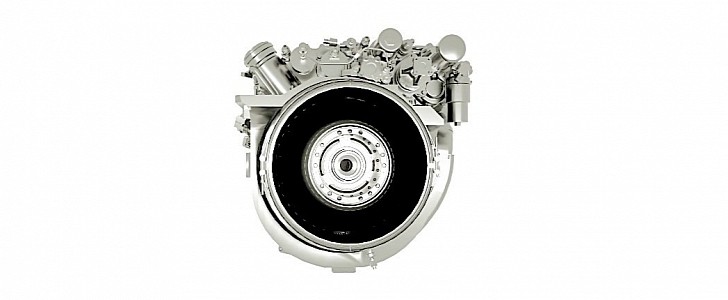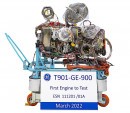Back in March, General Electric began testing a new rotorcraft engine called T901. The powerplant is the spearhead of the U.S. Army’s Improved Turbine Engine (ITE) program and is meant for both existing and future helicopters.
Over the next few years, GE will have to make eight such prototype engines for trials, and it’ll have to subject them to 1,500 hours of full-scale ground testing and 5,000 hours of testing for full engine qualification. To date, the single prototype in existence was barely used for 100 hours, but that's reason for celebration.
“Testing of the first T901 engine was very successful with the engine accumulating more than 100 hours of run time,” said in a statement Tom Champion, GE’s T901 Program Director.
“We were impressed with the performance and condition of the engine’s compressor, combustor, and turbine sections as well as the 3D-printed (additive) manufactured parts and ceramic matrix composite (CMC) components.”
The second engine of eight was just announced this week. The powerplant will enter trials next year at the company’s Lynn, Massachusetts facility, and will later move to Evendale, Ohio, for altitude testing.
When finally ready, production version of the unit will be used in the UH-60 Black Hawk and AH-64 Apache, but also the winner of the Future Attack Reconnaissance Aircraft (FARA) program, which sees the Bell 360 Invictus fighting for the win against the Sikorsky Raider X.
For the existing helicopters, the conversion to the new powerplant should be simple, given how the T901 has the same aircraft mounting and installation envelope as the T700 currently in use.
Unlike the existing one, though, it should provide 3,000 shaft horsepower, which is 50 percent more than the existing one. It should also provide 25 percent more fuel efficiency and by extension, fewer emissions.
“Testing of the first T901 engine was very successful with the engine accumulating more than 100 hours of run time,” said in a statement Tom Champion, GE’s T901 Program Director.
“We were impressed with the performance and condition of the engine’s compressor, combustor, and turbine sections as well as the 3D-printed (additive) manufactured parts and ceramic matrix composite (CMC) components.”
The second engine of eight was just announced this week. The powerplant will enter trials next year at the company’s Lynn, Massachusetts facility, and will later move to Evendale, Ohio, for altitude testing.
When finally ready, production version of the unit will be used in the UH-60 Black Hawk and AH-64 Apache, but also the winner of the Future Attack Reconnaissance Aircraft (FARA) program, which sees the Bell 360 Invictus fighting for the win against the Sikorsky Raider X.
For the existing helicopters, the conversion to the new powerplant should be simple, given how the T901 has the same aircraft mounting and installation envelope as the T700 currently in use.
Unlike the existing one, though, it should provide 3,000 shaft horsepower, which is 50 percent more than the existing one. It should also provide 25 percent more fuel efficiency and by extension, fewer emissions.








